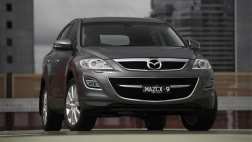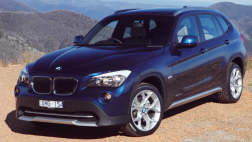That's not to say that Saab is not trying and that there is no hope for the future.
But it just seems to be getting tougher and tougher for the little Swede at the bottom of the GM totem pole. I might as well go on the record here and say that I am an unrepentant fan of Saab's interior styling — generally.
I hate the stupid handbrake arrangement that is designed solely for the purpose of looking good and jamming fingers but that apart, Saab's aircraft-inspired instrument panels and ergonomic seats are certainly on the list of favourites.
The 9-5 wagon, as old as it is, remains a superbly practical, stylish and safe family conveyance. That only serves to make the 9-3, and the 9-3 Convertible in particular, even more of an enigma. The latest offering for Australia is a little bit of a "coals to Newcastle" philosophy with the bolting in of a 2.8-litre Holden-made V6 in the 9-3 Aero.
From the same Alloytec basics as Commodore's 3.6-litre powerplant, albeit with a twin-scroll turbo attached, the V6 gives the 9-3 some serious punch, with 184kW and 350Nm from 2000-4500rpm. With 90 per cent of that considerable urge available from just 1500rpm, it is no surprise that Saab claims it as the fastest-accelerating model in the company's history.
Even quicker, it says, than the manufacturer's brutish, and almost uncontrollable, Viggen of the late 1990s.
The 9-3 V6, with just a hint of low-down lag, will put the 0-100km/h sprint behind in a respectable 6.7 seconds.
And, more importantly, it has a good willingness to find some urge when that is what's required for overtaking.
Gearing in the tested six-speed automatic was well-suited to the engine, with minimal hunting and, once up and running, displaying an easy ability to operate within the power and torque bands.
Don't bother with the awkwardly mounted shift buttons on the wheel.
Rather, use the shifter for the manual mode, even if the forward-up back-down pattern is counter-intuitive.
Ride comfort is quite acceptable on smooth or undulating surfaces but is found out quickly over sharper surfaces such as lane dividers and crumbling tarmac.
Steering is light and quite direct on turn-in but there is an uncomfortable aggression and sharpness as the wheel "fights" to get itself back on centre.
The car's ageing design still shows itself in the amount of scuttle-shake that is evident with the roof down, particularly when cornering over broken surfaces.
The cabin, in keeping with Saab in general, is comfortable and encompassing. The seats are not over-bolstered but they do provide ample support and adjustment when finding an optimum driving position.
There is no feeling of being cramped in the front of the cabin and for rear-seat passengers, the space allowance is better than most in the convertible world.
The one-touch roof deployment is good and the ability to raise the roof at up to 20km/h is a blessing when showers move in. There is also reasonable boot space available and no intrusion of the stowed roof into that space.
Surprisingly, given the quality of the interior trim and the double roof skin, noise isolation in the cabin with the roof up is particularly poor. Even worse is the rear vision with the roof in place.
Reverse parking becomes an act of faith, with huge tracts of vision blocked by the B-pillar/roof supports and only a miserly rear window and smallish wing mirrors for help.
At $92,400 as tested, including the $2500 premium for the six-speed auto, the Aero convertible is not an insubstantial purchase.
With premium pricing, the 9-3 Aero faces some serious competition but Saab is getting used to doing the tough yards.
Saab 9-3 2006: Linear
| Engine Type | Turbo 4, 2.0L |
|---|---|
| Fuel Type | Premium Unleaded Petrol |
| Fuel Efficiency | 9.7L/100km (combined) |
| Seating | 4 |
| Price From | $6,820 - $9,680 |














